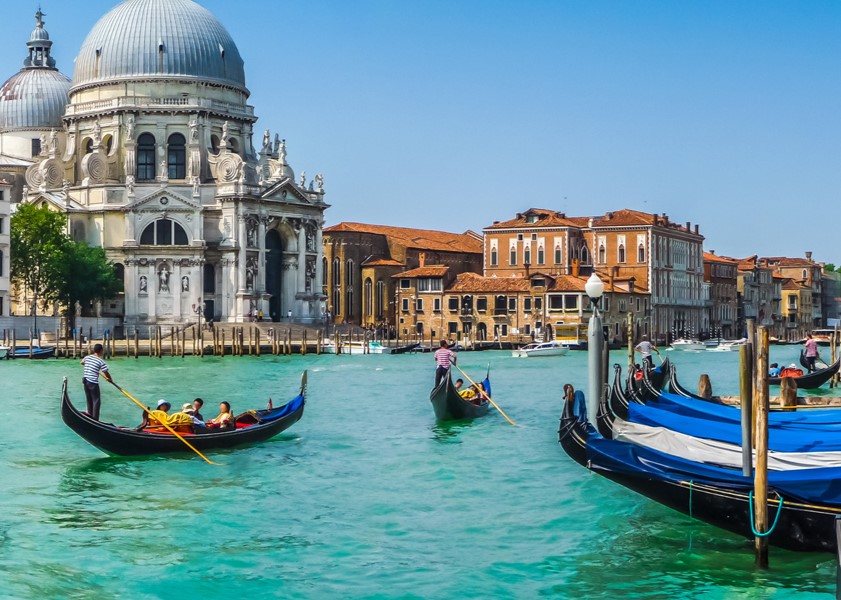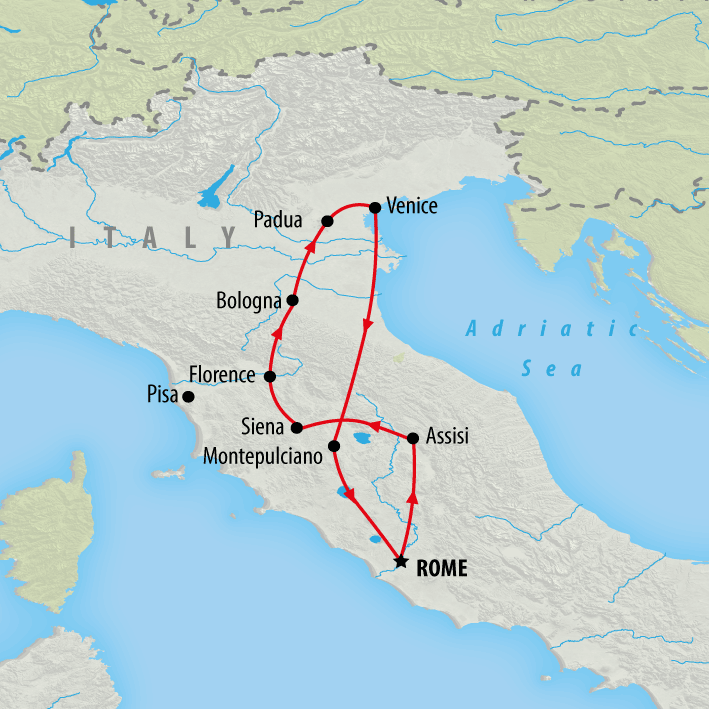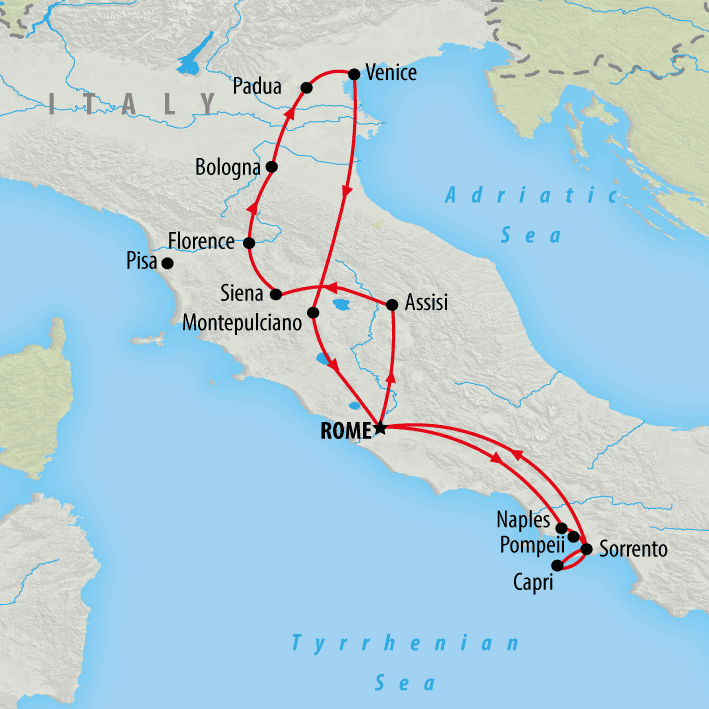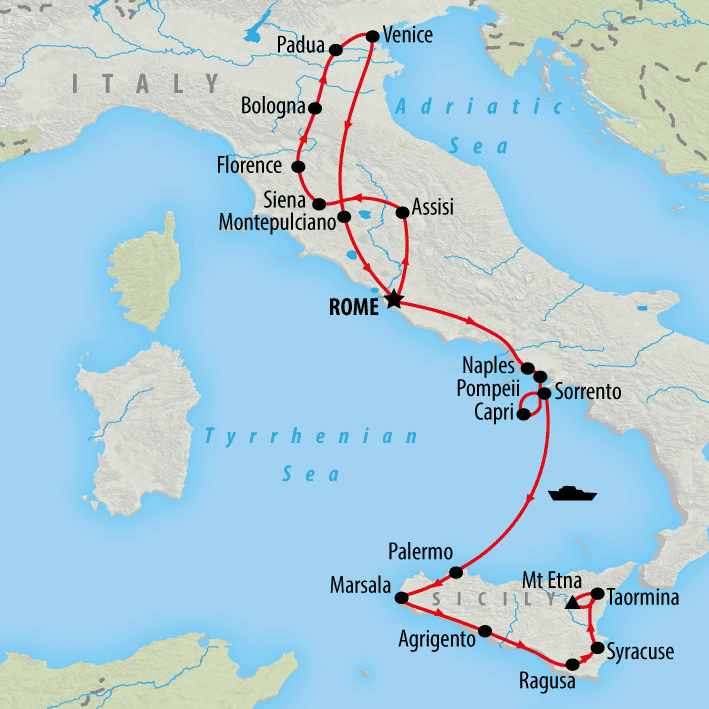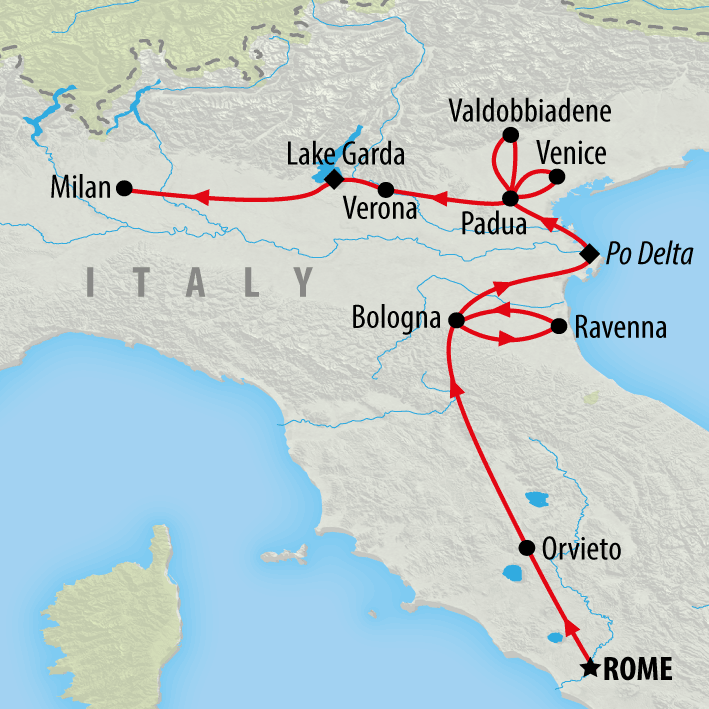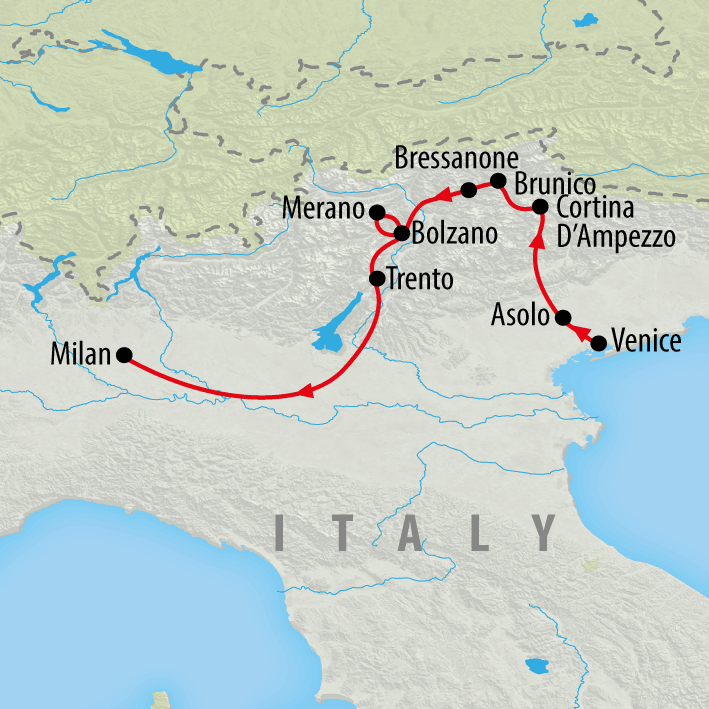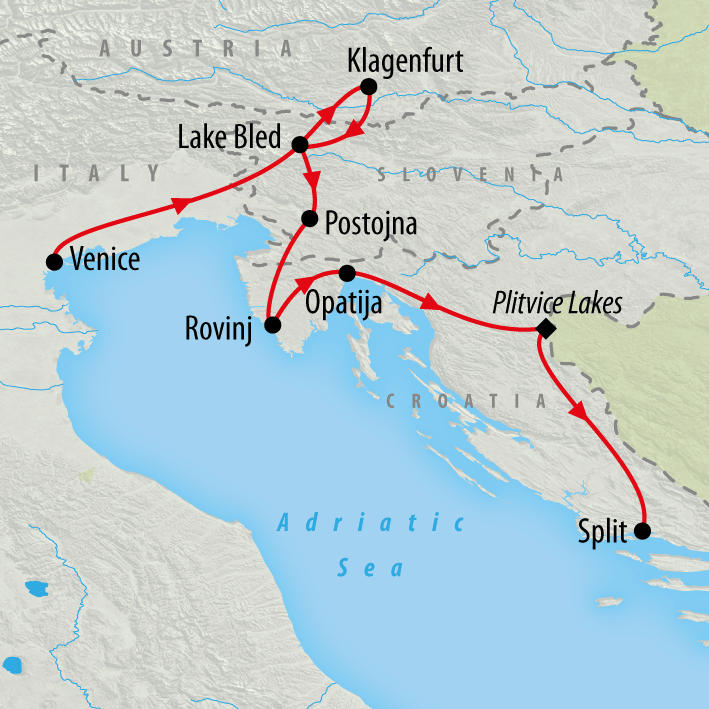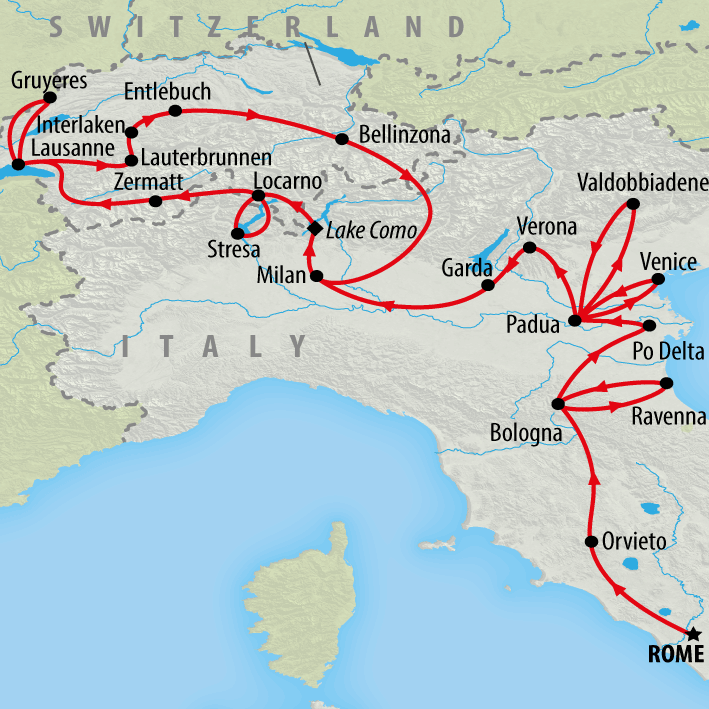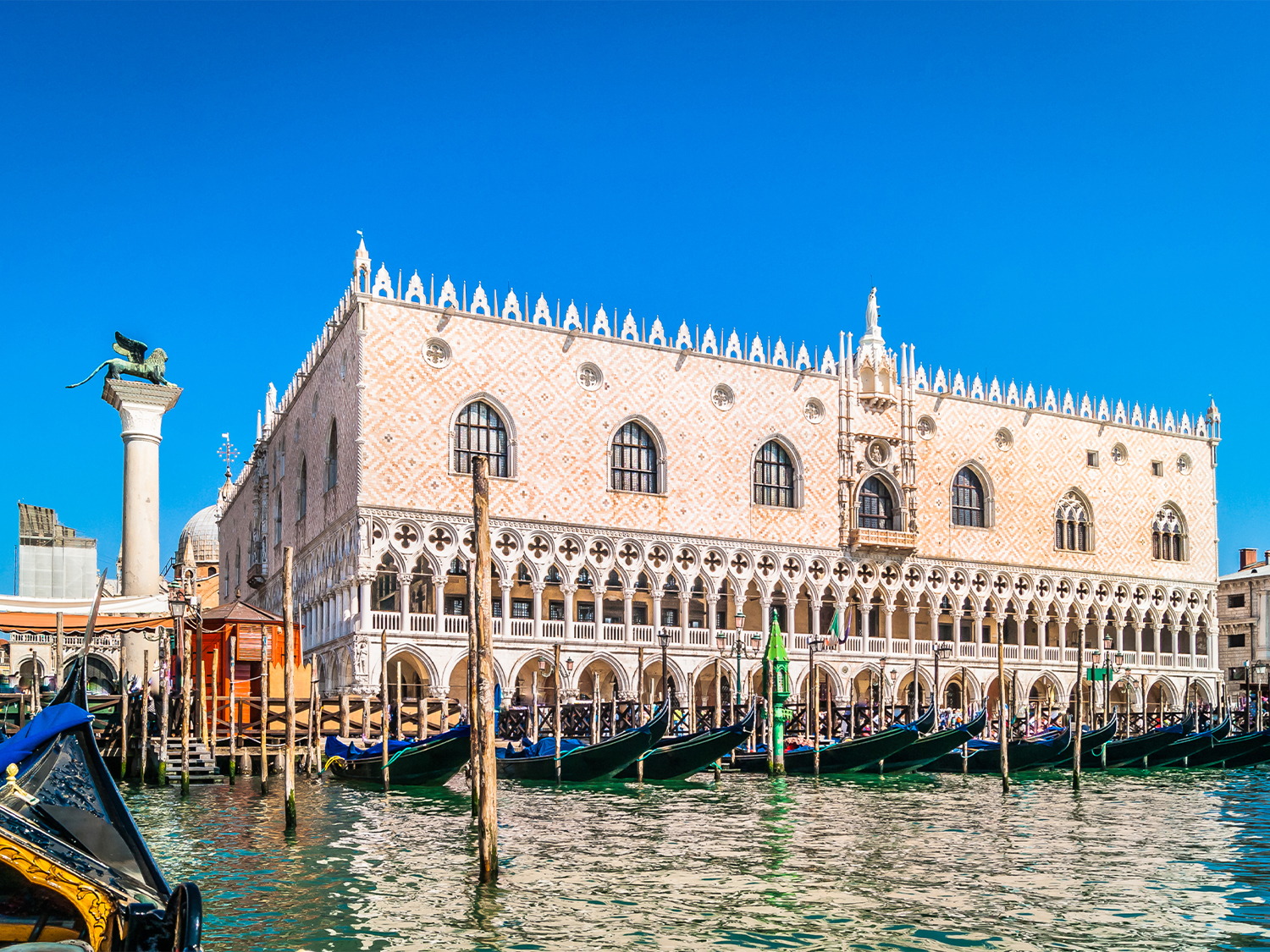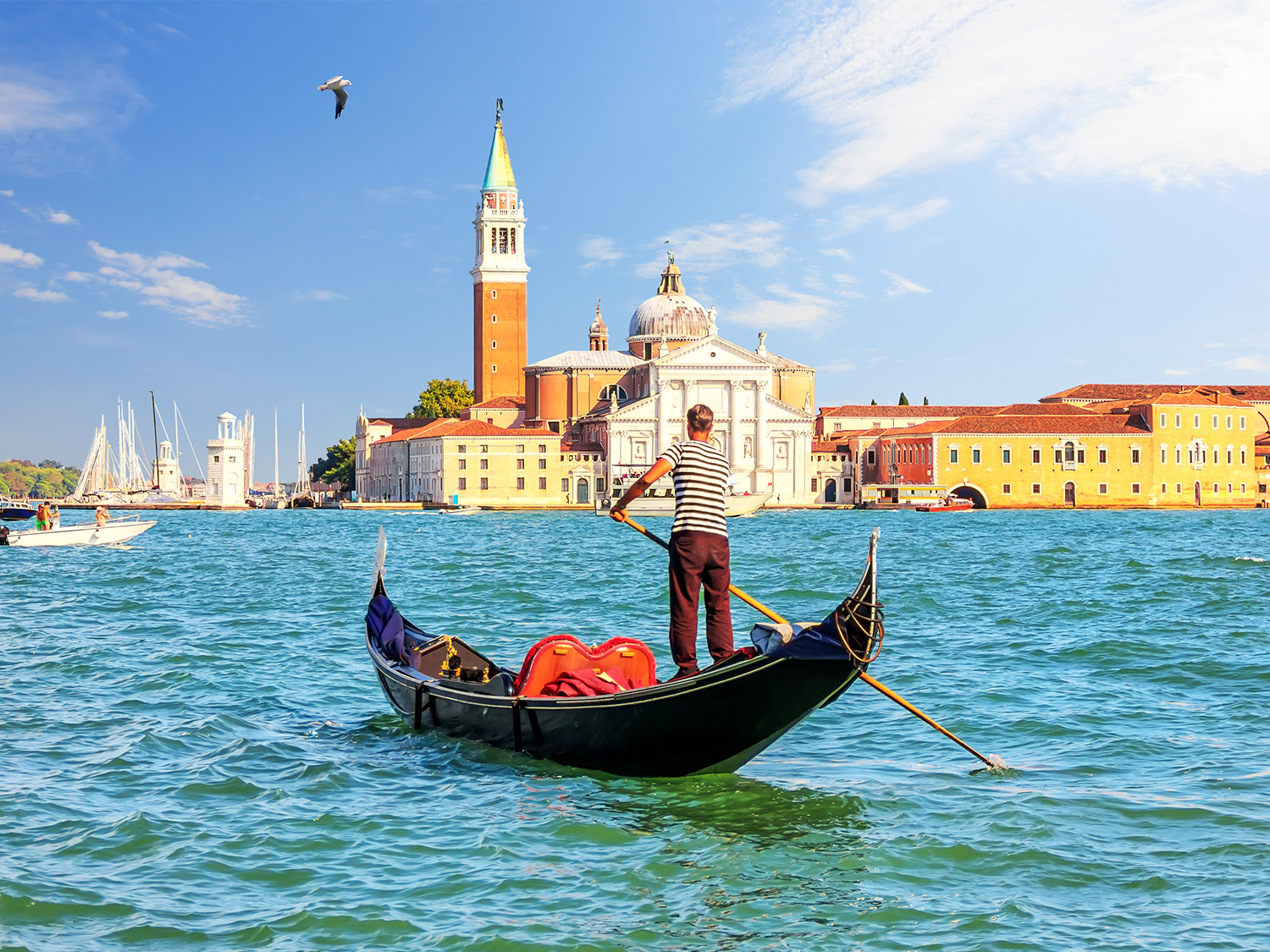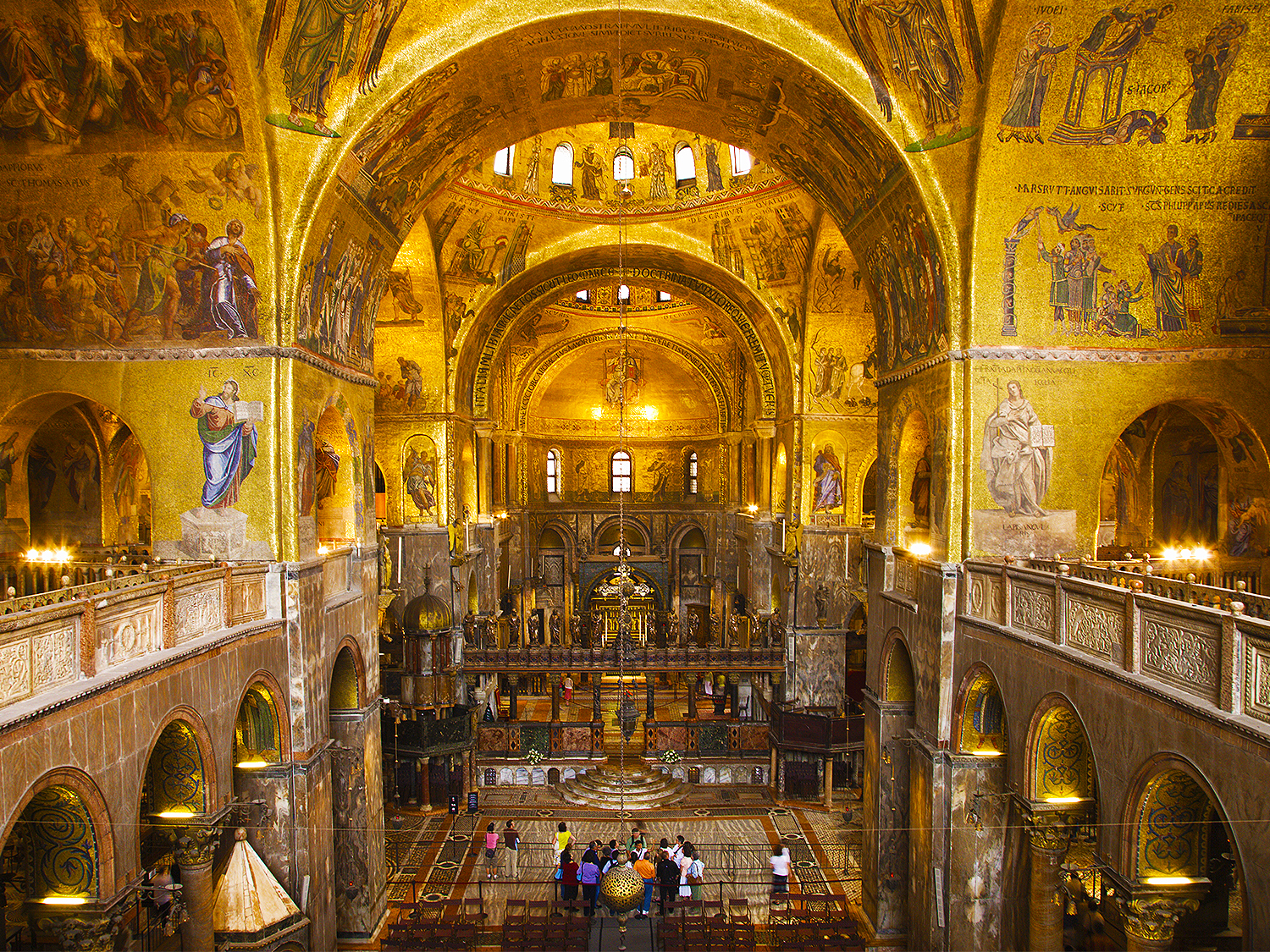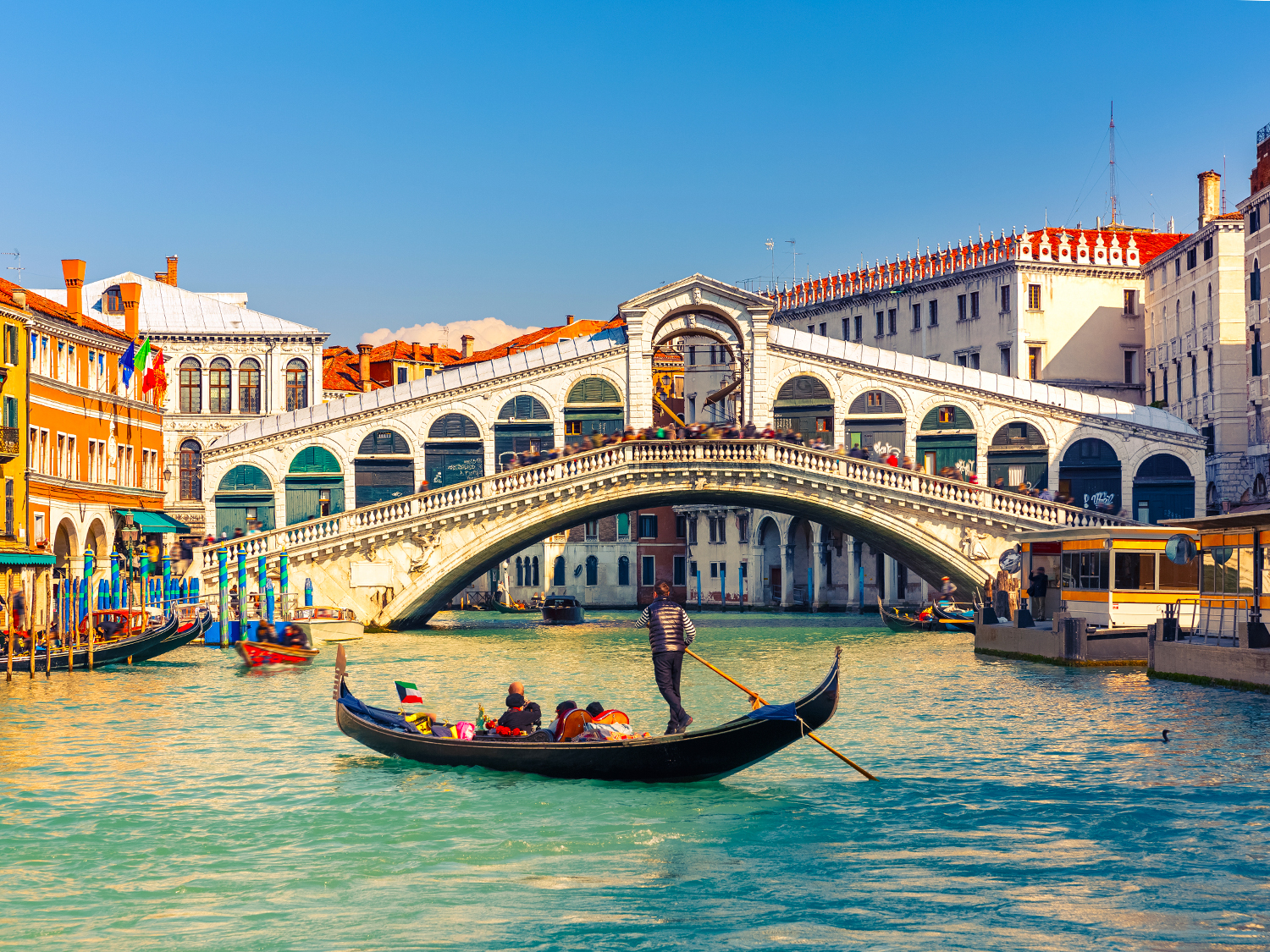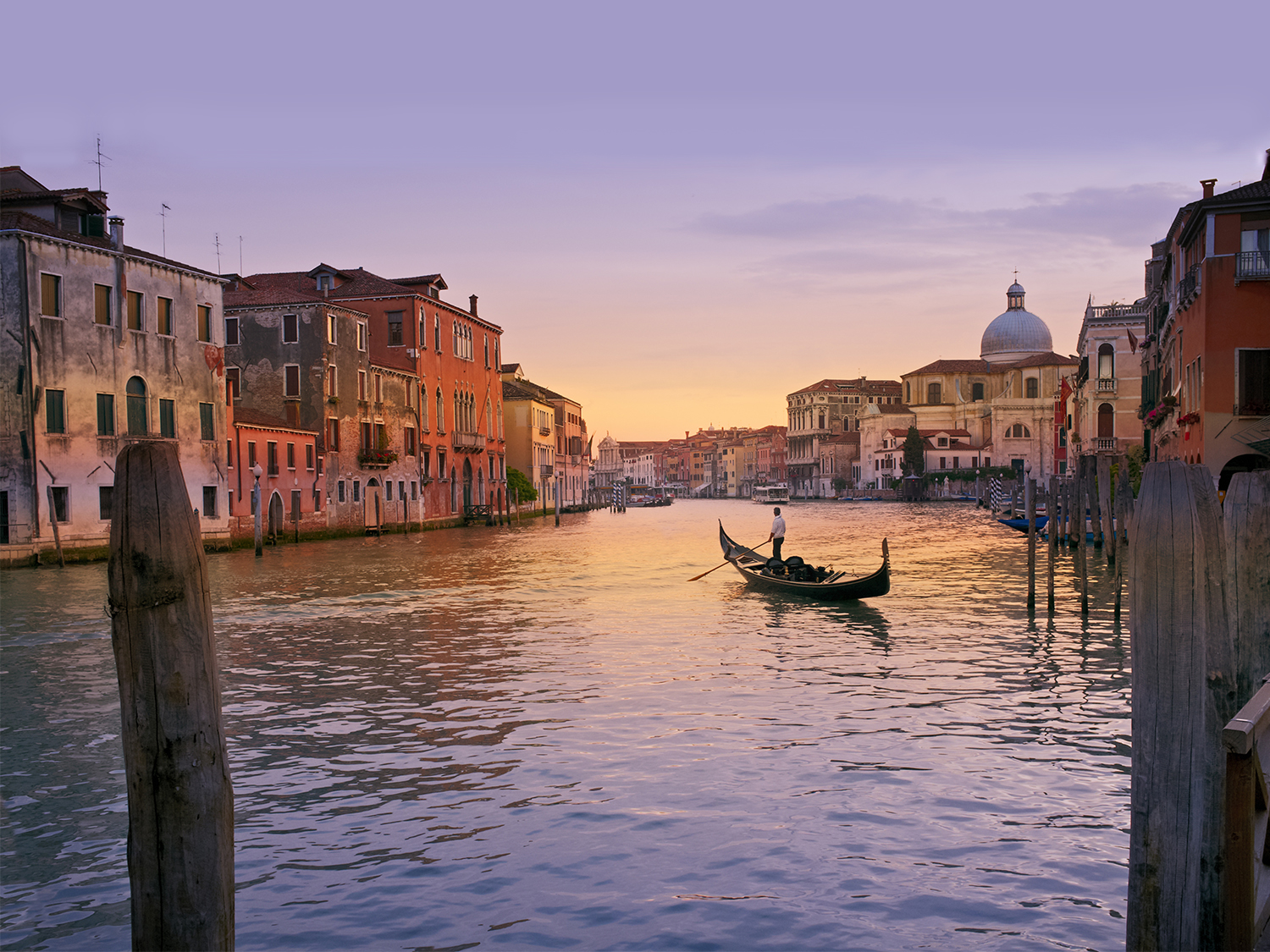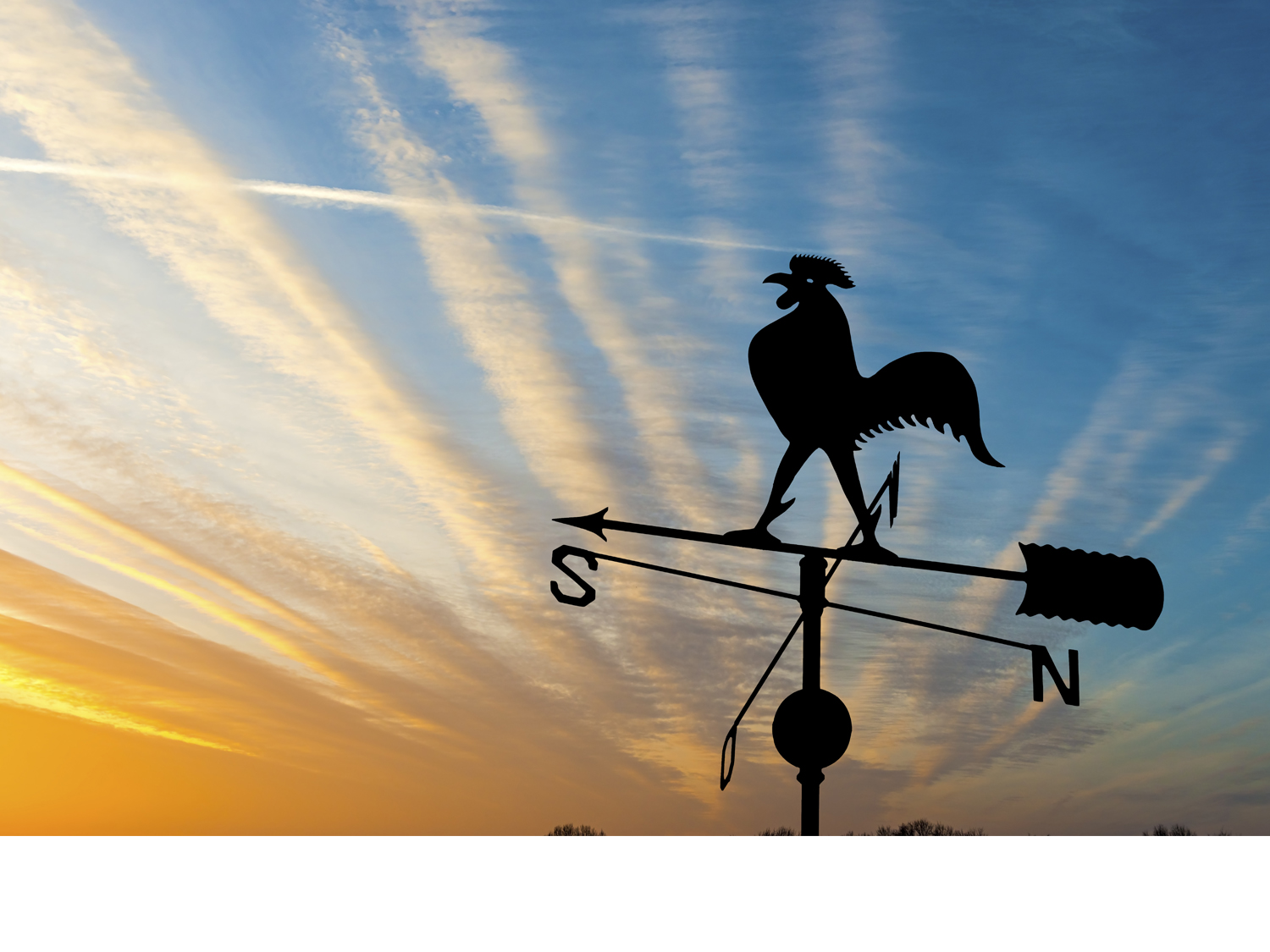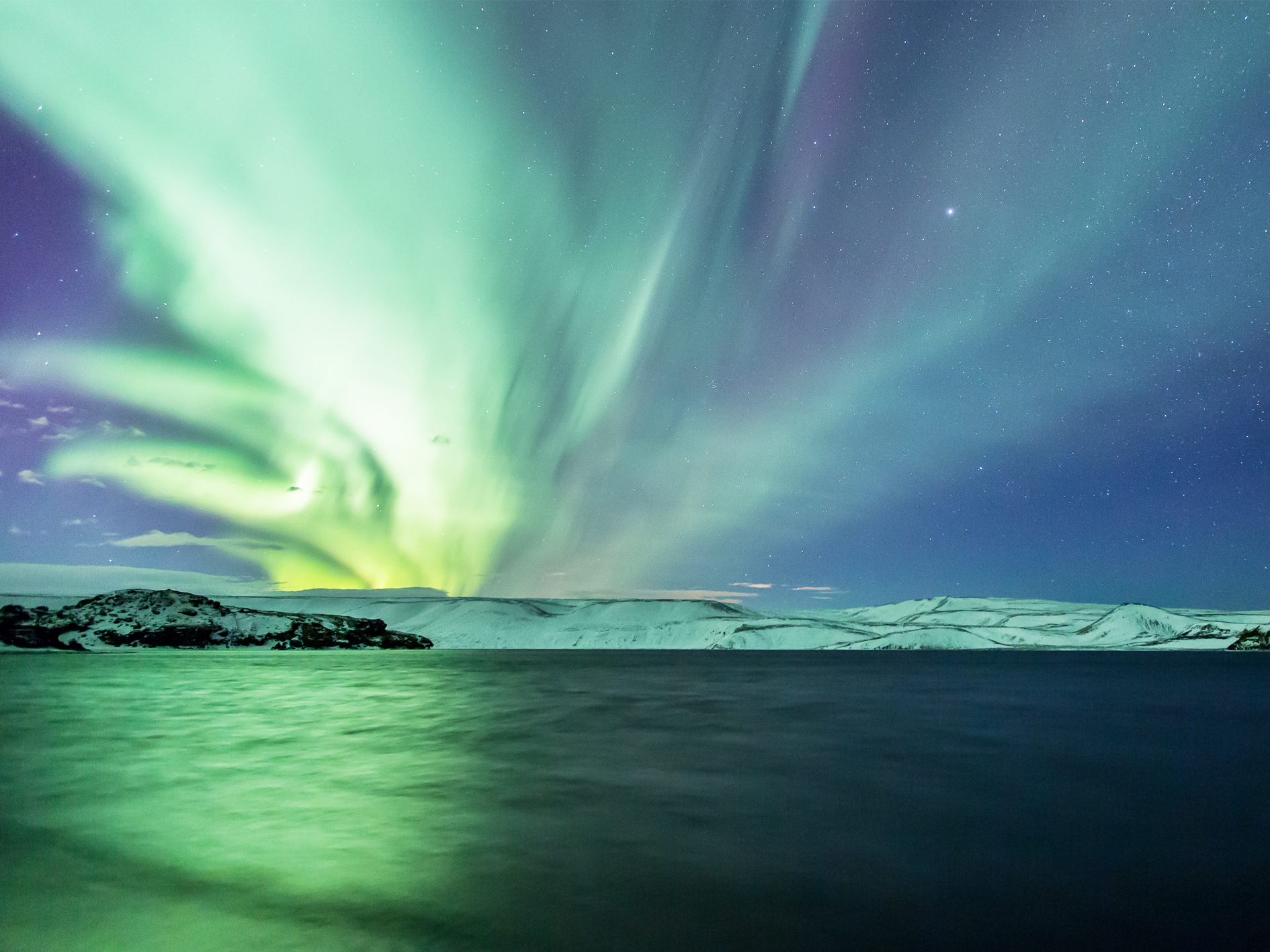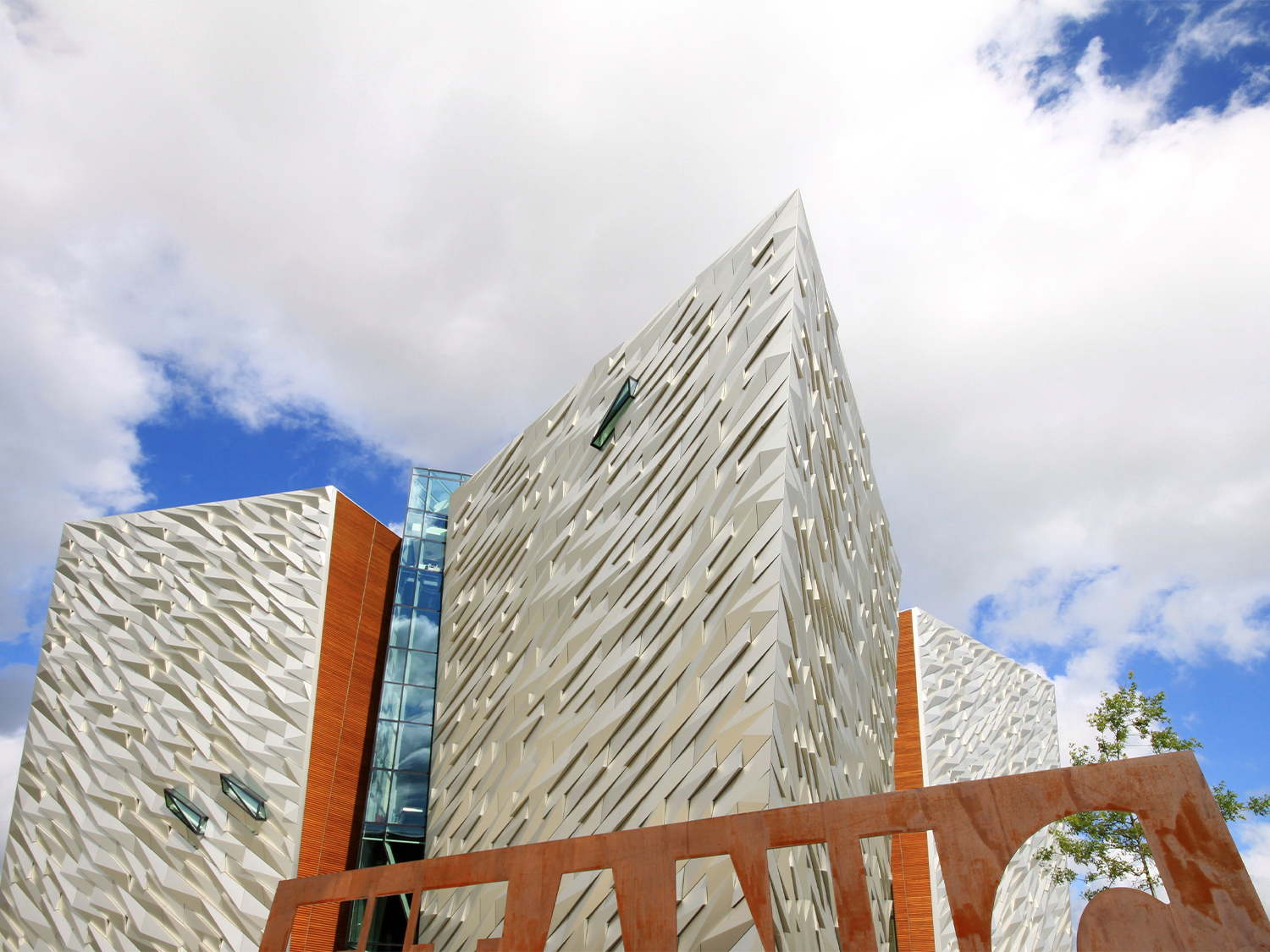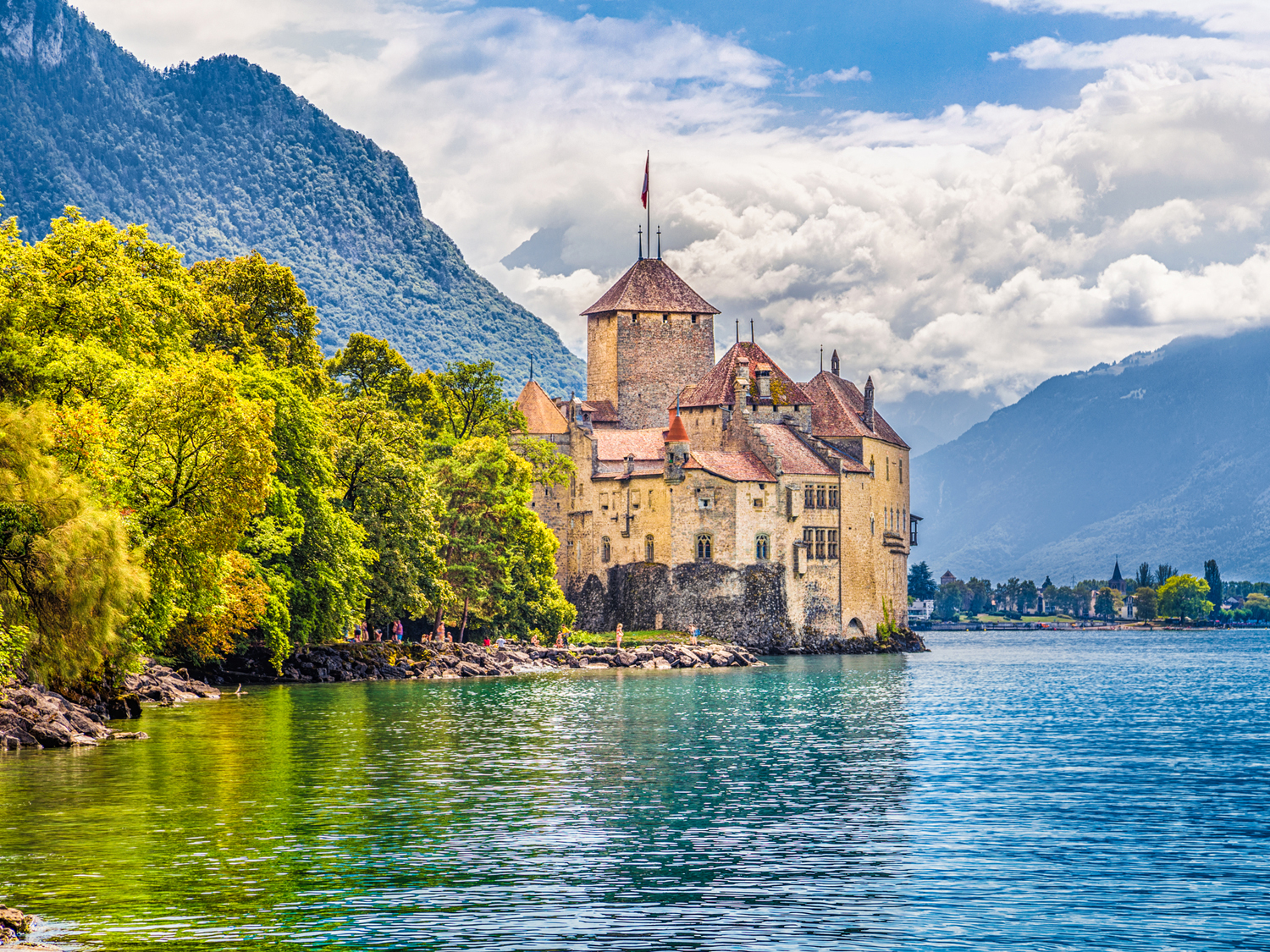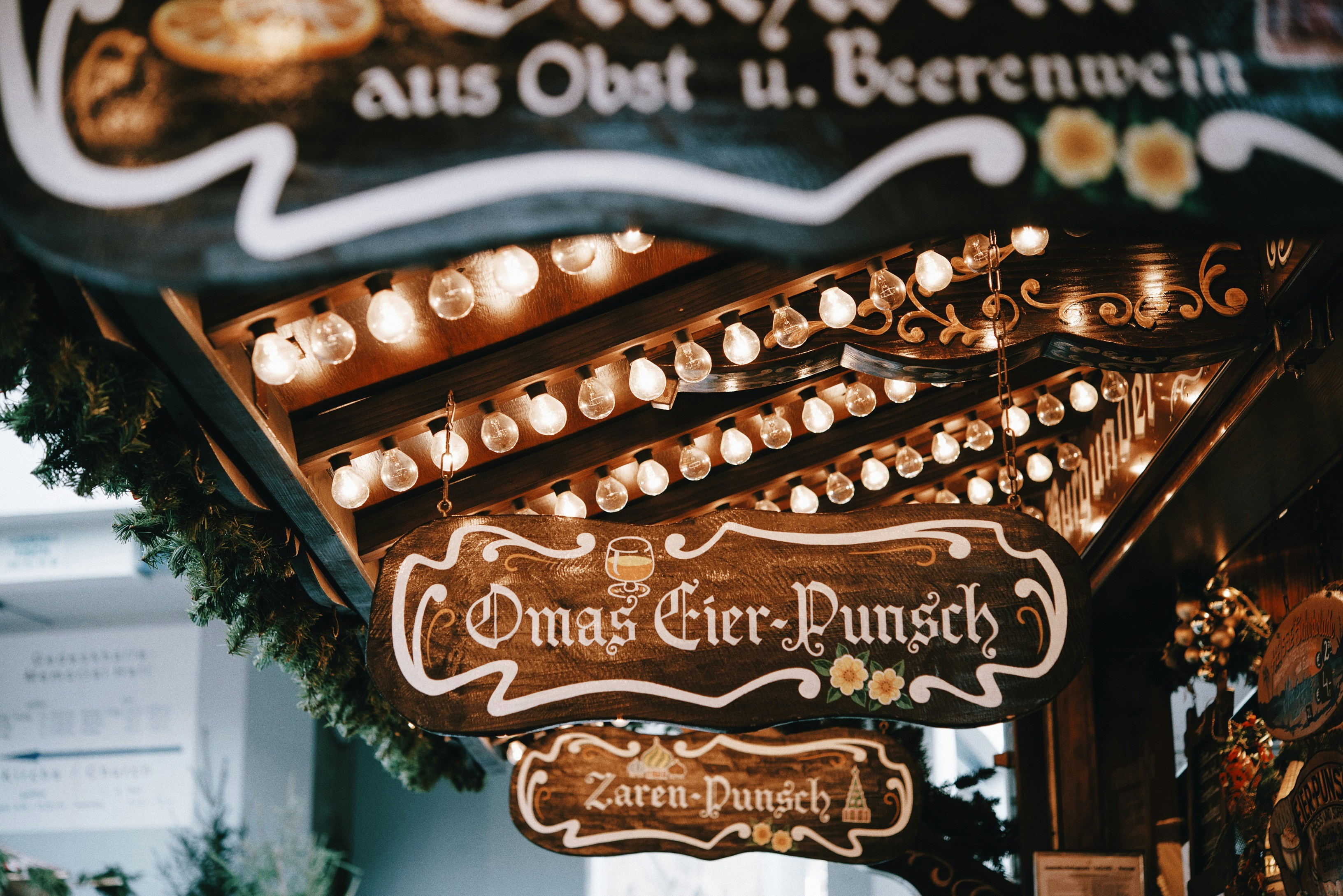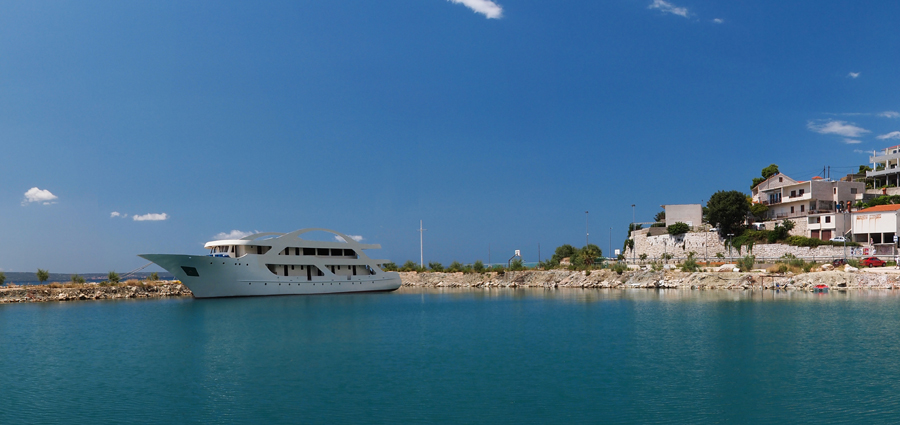Best Tours to Venice, ItalyDiscover Venice and Beyond
When do you want to go?
2024
I'm flexible
Passengers
Adults (18+)
Children (0 - 17)
Venice, Italy: The Floating City
With its maze of canals, Venice has been dubbed ‘The Floating City’ by the world. A place that, for centuries, has been associated with romance, making it a popular destination for couples. Situated in northeastern Italy, Venice is built upon a group of 118 small islands that are separated by canals and connected by 400 bridges. It’s extraordinary architecture, rich history, and distinctive cultural heritage make it a magnet for tourists from across the globe.
The city’s origins date back to the 5th century AD, when people sought refuge from barbarian invasions on the marshy islands of the Venetian Lagoon. Over the centuries, Venice grew into a powerful maritime republic and a key centre for trade, commerce, and culture.
Guided Tours to Venice, Italy
Travellers may discover the mysteries of Venice with a well-planned and immersive trip, all while gaining access to the skills of an experienced local guide. With their deep knowledge and proficiency, guides offer comprehensive explanations of Venice's rich history, facilitate easy navigation of the city's winding streets, and grant access to unique experiences like guided tours of historic palaces and visits to artisan workshops. Through interactions with people, sampling real food, and gaining a greater understanding of Venetian customs and culture, these tours promote cultural immersion. Additionally, by giving helpful advice on how to navigate the city safely and avoid tourist scams, guided tours give a sense of comfort and reassurance, especially for single travellers.
What to Expect – Why Visit Venice?
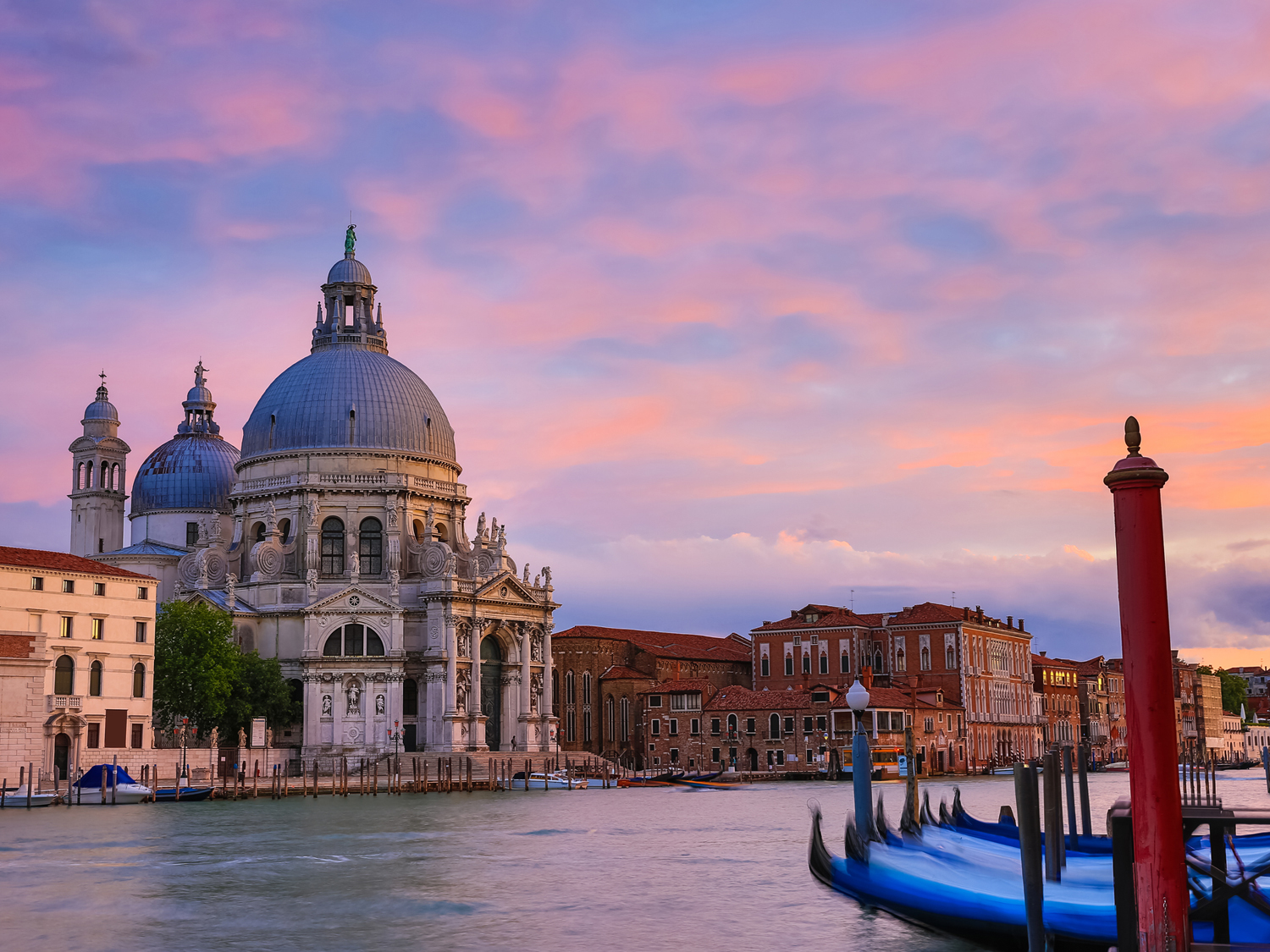
Visitors to Venice can expect to be transported to a world of timeless beauty, romance, and cultural richness. Navigating the city’s labyrinthine streets and picturesque canals, visitors will encounter stunning architectural marvels such as St. Mark’s Basilica, the Doge’s Palace, and the Riatlo Bridge, each bearing witness to Venice’s glorious past as a maritime republic. They can explore charming neighbourhoods filled with hidden squares, artisan workshops, and traditional Bacari serving delicious cicchetti (Venetian tapas). The city’s vibrant cultural scene offers a wealth of experiences, from world-class art exhibitions at the Peggy Guggenheim Collection to enchanting performances of classical music and opera in historic venues.
History of Venice
Venice, founded in the 5th century AD by refugees fleeing barbarian invasions, quickly rose to prominence as a powerful maritime republic. Its location is strategic; at the crossroads of East and West, it facilitates lucrative trade routes. The result of this was that it led to a golden age of prosperity and cultural flourishing in the Middle Ages and Renaissance. The Venetian Republic expanded its influence through conquest and diplomacy, establishing colonies and trading outposts across the Mediterranean. During this time, Venice became a patron of the arts, attracting renowned artists and architects whose masterpieces adorned the city’s churches, palaces, and public buildings.

Venetian Architecture
Venice’s architectural marvels are a testament to the city’s vast and intricate history. The detailed facades of the building are adorned with delicate stonework, elegant arches, and ornate balconies.
Canal Culture
The canals of Venice serve not only as transportation routes but also as a way of life for Venetians. From the bustling Grand Canal, lined with majestic palaces and bustling vaporettos, to the quieter, more intimate canals of the residential neighbourhood (sestieri), each waterway has its own charm. Venetians rely on boats for everyday activities, from delivering goods to navigating the maze-like network of water streets.
Traditional Crafts
Venice has a long history of artisanal craftsmanship, with traditional workshops known as ‘botteghe’ scattered throughout the city. Murano, an island in the Venetian Lagoon, is famous for its centuries-old glassmaking tradition. Visitors can witness skilled artisans creating intricate glass sculptures, chandeliers, and jewellery using ancient techniques passed down through generations. On the island of Burano, renowned for its colourful houses, local artisans practice the art of lacemaking, producing delicate lacework prized around the world.
Cuisine and Culinary Traditions
Venetian cuisine reflects the city’s maritime heritage and proximity to the sea. Fresh seafood, such as squid, cuttlefish, and clams, feature prominently in traditional dishes like risotto al nero di sepia (risotto with cuttlefish ink) and sarde in saor (marinated sardines). Cicchetti, small plates of Venetian tapas served in bacari (wine bars), offer a taste of local flavours, while Veneto wines, including Prosecco and Amarone, complement meals perfectly.
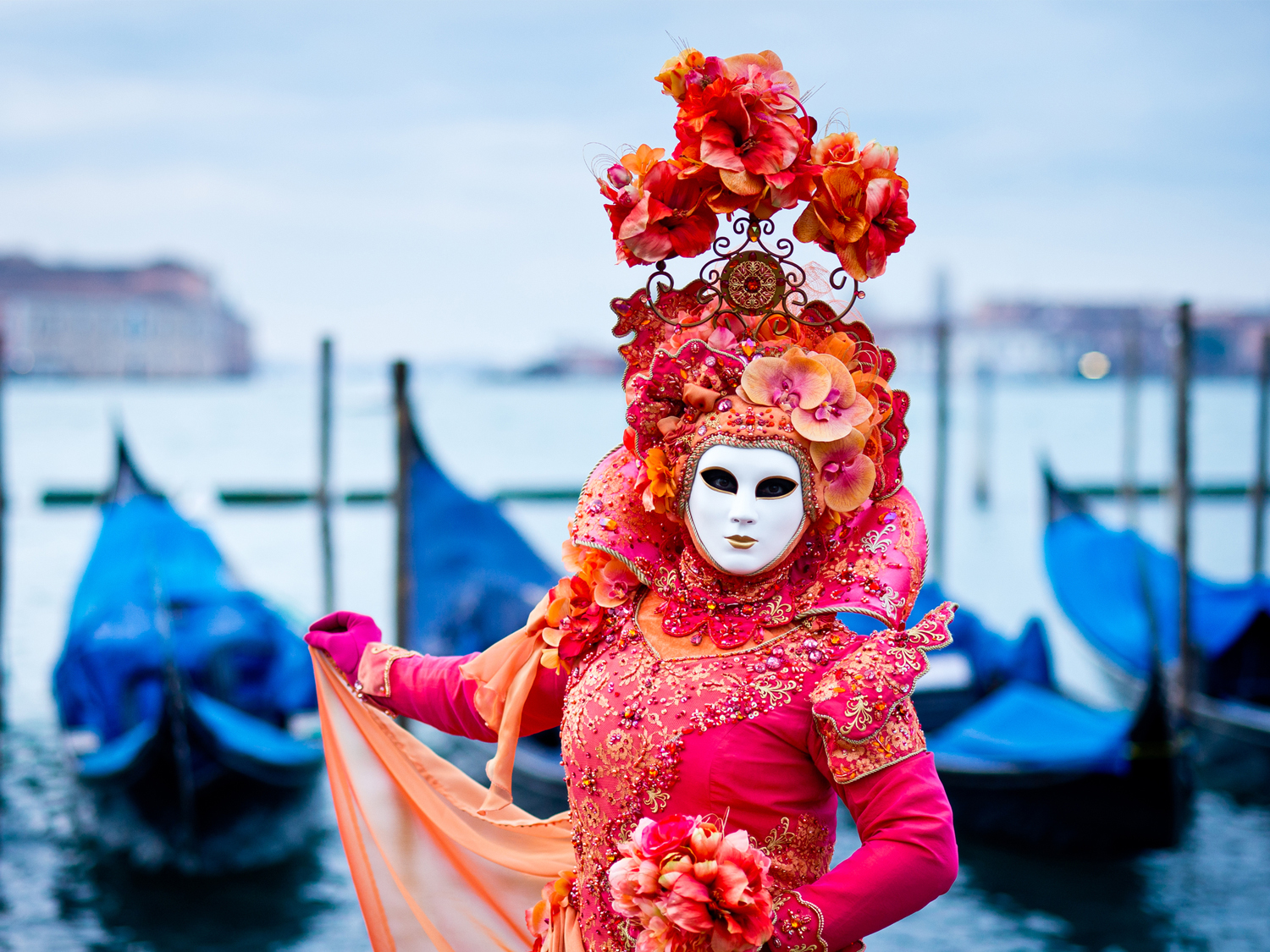
Carnival and Festivals
Venice is famous for its extravagant Carnival, a two-week-long celebration leading up to Lent. During Carnival, the city comes alive with masquerade balls, elaborate costumes, and vibrant parades, harking back to the opulent festivities of the Venetian Republic. Other annual events, such as the Historical Regatta and the Feast of the Redeemer, pay homage to Venice’s maritime traditions and religious heritage, attracting visitors and locals alike.
Environmental Challenges and Conservation Efforts
Venice faces significant challenges, including the threat of acqua alta (hide tides) and the gradual sinking of its foundations due to subsidence. To combat these issues, ambitious engineering projects, such as the MOSE flood barrier system, have been implemented to protect the city from flooding. Additionally, sustainable tourism initiatives aim to preserve Venice’s fragile ecosystem and cultural heritage while ensuring a positive experience for visitors and residents alike.
Popular Sites to See in Venice
Doge’s Palace (Palazzo Ducale)
Once the seat of Venetian power, this grand Gothic palace is a symbol of the city’s history. Visitors can explore its lavish chambers, ornate staircases, and stunning works of art, including paintings by Titian and Tintoretto.
St. Mark’s Square (Piazza San Marco)
The principle public square of Venice, St. Mark’s Square, is surrounded by architectural masterpieces such as St. Mark’s Basilica, the Doge’s Palace, and the Campanile (bell tower). Visitors can enjoy coffee at outdoor cafes while taking in the bustling atmosphere.
St. Mark’s Basilica (Basilica di San Marco)
This magnificent church is a masterpiece of Byzantine architecture, adorned with intricate mosaics, marble columns, and golden domes. The basilica house relics of St. Mark and is in St. Mark’s square.
Rialto Bridge (Ponte di Rialto)
One of Venice’s most iconic landmarks, the Rialto Bridge spans the Grand Canal and is lined with shops and stalls selling jewellery, souvenirs, and local delicacies. The bridge offers breathtaking views of the canal and surrounding architecture.
Grand Canal (Canal Grande)
Venice’s main waterway winds its way through the heart of city, flanked by elegant palaces, historic churches, and colourful buildings. A ride on a vaporetto (water bus) or a gondola offers a unique perspective of Venice’s architectural splendour.
Frequently asked questions
What is the best time to visit Venice?
Venice is charming year-round, but the best time to visit is typically during the spring (April to June) and fall (September to November), when the weather is mild and crowds are smaller. Avoiding the peak summer months can also help you enjoy the city without the crowds and high temperatures.
How do I get around Venice?
Venice is primarily navigated on foot or by water. You can explore the city's narrow streets and picturesque squares on foot, or you can take vaporettos (water buses) along the Grand Canal and smaller canals. Gondolas are also available for a more romantic but expensive mode of transportation.
Are there any special events or festivals in Venice?
Yes, Venice hosts several special events and festivals throughout the year. The most famous is the Venice Carnival, held in February, featuring elaborate costumes, masked balls, and parades. Other notable events include the Venice Biennale (an international art exhibition) held biennially, the Historical Regatta in September, and the Feast of the Redeemer in July.
Is Venice sinking?
Yes, Venice is sinking at a rate of about 1-2 millimetres per year. Additionally, the city faces the threat of rising sea levels due to climate change, leading to periodic flooding known as acqua alta. Efforts are underway to mitigate the effects of sinking and flooding, including the construction of flood barriers and sustainable tourism initiatives.
What are some must-visit attractions in Venice?
Some must-visit attractions in Venice include St. Mark's Basilica and Square, the Doge's Palace, the Rialto Bridge, the Grand Canal, and the Peggy Guggenheim Collection. Exploring the city's picturesque neighbourhoods, such as San Marco, Dorsoduro, and Cannaregio, is also highly recommended.
How can I experience Venetian cuisine?
To experience Venetian cuisine, be sure to try local specialties such as cicchetti (small plates of Venetian tapas), risotto al nero di seppia (risotto with cuttlefish ink), sarde in saor (marinated sardines), and fresh seafood from the Adriatic Sea. Visit local bacari (wine bars) to sample cicchetti and explore traditional osterie (taverns) for hearty Venetian dishes.
Book Your Next Tour to Venice with Us
Venice captivates visitors with its unparalleled beauty, romantic ambiance, and rich cultural heritage. From its maze-like streets and picturesque canals to its magnificent palaces and world-class art, the city continues to enchant and inspire all who have the privilege of experiencing its magic.
Europe travel guides
Our customers say
Excellent
4.4 out of 5 based on 275 reviews
